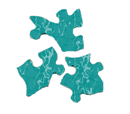Janice A.: Young Woman Temporarily Living in a Shelter
Betty P. Dennis, RN, DrPH
Dean, Division of Nursing
Dillard University
New Orleans, Louisiana
Information Obtained during the First Visit/Encounter:
Janice A., age 26, lived in the local shelter for homeless women and children for about three weeks since she lost her job as a waitress. She was 30 weeks pregnant and single. Janice went to the health clinic located in the shelter that was operated by the local college of nursing and staffed by faculty, students, and community volunteers. She told the nurse that she had not scheduled any prenatal visits since she "felt all right".
During the examination, Janice's blood pressure was 148/96, proteinuria was +1 on dipstick, ankle edema was 1+, weight was 171 pounds, and height was 5'6". As she and the nurse talked about these data and her need for prenatal care, Janice said, "Before this pregnancy, I weighed about 145 pounds. I seem to have gained a lot more weight during the last few weeks. I remember that both my sisters had high blood pressure when they were pregnant."
Usually, Janice ate breakfast at the shelter, was required to leave by 7:30 AM, and could not return until 5:30 PM. During her time on the street, she ate whatever she could find. "I am alone and can’t do any better right now”, said Janice, “but I want to find a home for me and my baby. Thank goodness I can stay here right now. Can you help me talk to someone about an apartment and a job?" The nurse and Janice discussed ways to improve her nutrition and rest, manage her symptoms, and increase her safety while in and out of the shelter. The nurse emphasized the need for Janice to obtain housing and other services, and see a nurse practitioner or physician at the county health department obstetric clinic right away. The nurse called the clinic and the community social service agency for appointments, and also completed written referral forms for Janice. The nurse gave Janice directions to the facilities and bus passes.
Application of the Omaha System:
DOMAIN: ENVIRONMENTAL
Problem: Income (high priority)
Problem Classification Scheme
Modifiers: Family and Actual
SIGNS/SYMPTOMS OF ACTUAL:
low/no income
uninsured medical expenses
difficulty buying necessities
Intervention Scheme
Category: Teaching, Guidance, and Counseling
TARGETS AND CLIENT-SPECIFIC INFORMATION:
finances (needed source of funding for regular prenatal care)
Category: Case Management
TARGETS AND CLIENT-SPECIFIC INFORMATION:
continuity of care (called referral sites to describe homeless status and need for communication)
social work/counseling care (referred to local social services for income assistance)
Problem Rating Scale for Outcomes
Knowledge: 2-minimal knowledge (did not know about resources for food, transportation, or a job)
Behavior: 2-rarely appropriate behavior (has not looked for a job, but asked for help)
Status: 1-extreme signs/symptoms (cannot pay for food, housing, and health care)
Problem: Residence (high priority)
Problem Classification Scheme
Modifiers: Family and Actual
SIGNS/SYMPTOMS OF ACTUAL:
homeless
Intervention Scheme
Category: Teaching, Guidance, and Counseling
TARGETS AND CLIENT-SPECIFIC INFORMATION:
home (ways to locate permanent housing)
safety (while on streets and in shelter)
Category: Case Management
TARGETS AND CLIENT-SPECIFIC INFORMATION:
social work/counseling care (referred to both county and community social services for income and housing assistance)
Category: Surveillance
TARGETS AND CLIENT-SPECIFIC INFORMATION:
home (status of referral/moving out of shelter)
Problem Rating Scale for Outcomes
Knowledge: 2-minimal knowledge (recognized that living in a shelter was not a permanent solution. " I want to find a home for me and my baby.")
Behavior: 2-rarely appropriate behavior (identified social services as a resource, but did not initiate contact)
Status: 2-severe signs/symptoms (can remain in shelter; no immediate prospects of permanent housing)
DOMAIN: PHYSIOLOGICAL
Problem: Pregnancy (high priority)
Problem Classification Scheme
Modifiers: Individual and Actual
SIGNS/SYMPTOMS OF ACTUAL:
difficulty with prenatal exercise/rest/diet behaviors
prenatal complications/preterm labor
inadequate social support
Intervention Scheme
Category: Teaching, Guidance, and Counseling
TARGETS AND CLIENT-SPECIFIC INFORMATION:
dietary management (ways to improve nutrition while in and out of shelter)
rest/sleep (ways to improve while in and out of shelter)
medical/dental care (why needed)
Category: Treatments and Procedures
TARGETS AND CLIENT-SPECIFIC INFORMATION:
specimen collection (urine)
Category: Case Management
TARGETS AND CLIENT-SPECIFIC INFORMATION:
medical/dental care (referred to county obstetric clinic)
Category: Surveillance
TARGETS AND CLIENT-SPECIFIC INFORMATION:
screening procedures (protein in urine, fetal health)
signs/symptoms-physical (weight, blood pressure, edema)
Problem Rating Scale for Outcomes
Knowledge: 1-no knowledge (did not recognize need to seek prenatal care; was "feeling all right" with this pregnancy)
Behavior: 1-not appropriate behavior (spent days on the street while having many symptoms)
Status: 2-severe signs/symptoms (limited or no social support, family history of hypertension during pregnancy, proteinuria, probable rapid weight gain, elevated blood pressure)
